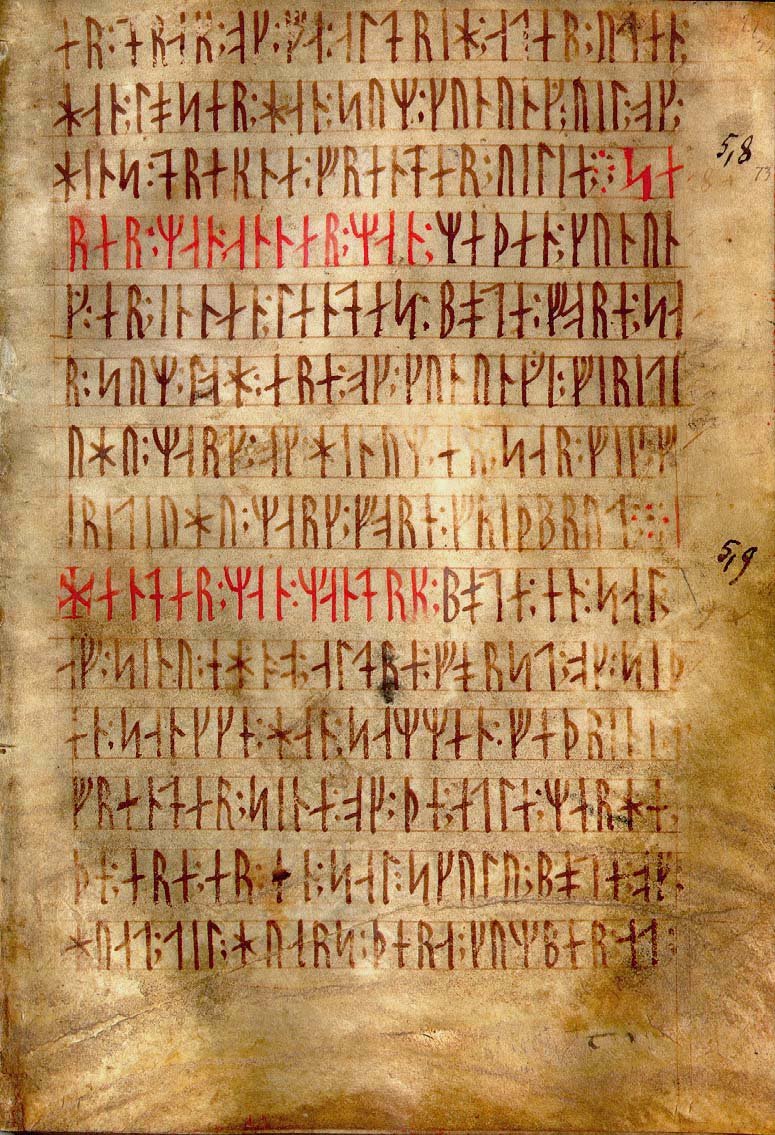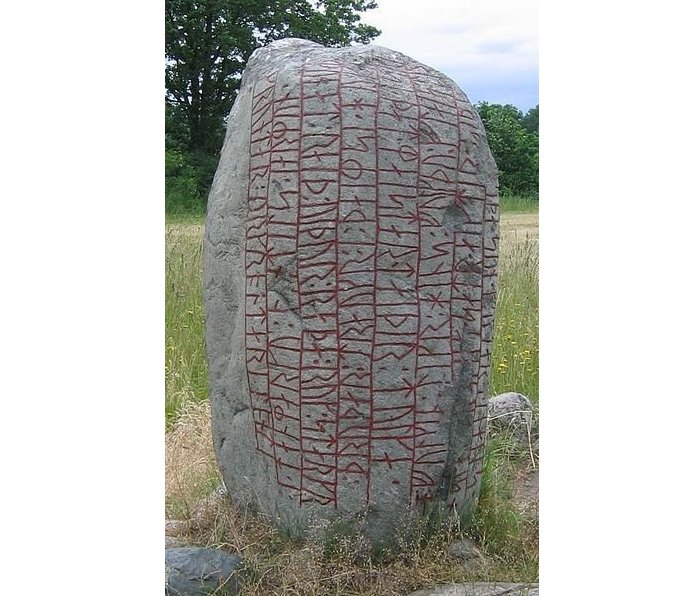Runes: Facts And History About Odin’s Secret Language
Ellen Lloyd - AncientPages.com - Runes played an essential part in the lives of the Vikings. Unfortunately, there are few remains of runic writing on paper from the Viking era. Nevertheless, thousands of stones with runic inscriptions have been found where Vikings lived.
Credit: Adobe Stock - Alejandro
In this article, we unravel the mystery of runes and examine significant facts and history that provide us with a better understanding of these ancient inscriptions and Odin's secret language.
Thousands of inscriptions in stone, wood, and metal have been unearthed, and each item gives us a glimpse into a culture that believed in the power and protection of the gods, telling fortunes and casting spells, and the glory of war.
Where Do Runes Originate From?
The word "rune" comes from Old Norse and means "Secret knowledge and wisdom." Symbols resembling runes appear as cave markings as early as the late Bronze Age. It was not until about 200 AD when the runemal (i.e., the art of runic interpretation) was widespread in Northern Europe, and the runic alphabet emerged. The actual age and origin of the runes are still shrouded in mystery.
What Is The Runic Alphabet?
The Futhark is the runic alphabet, but its origin is unclear. Some historians maintain it came from the Latins since it was the language of commerce during the Roman Empire, and Germanic tribes would likely have had contact with merchants, thereby exposing them to the language. Some scientists suggest the Futhark is based on the Etruscan alphabet.
The Younger Futhark. Credit: Runologe - CC BY-SA 4.0
The runic alphabet was known from the first century AD among all Germanic tribes around the North Sea and the Baltic Sea. The oldest version of the runic alphabet had 24 runes.
Each "letter" or figure is called a rune, and it has a phonetic sound, but similar to the Chinese alphabet, it also has a distinct meaning directly linked to Norse mythology. The Futhark was used for writing on wood, bone, and stone and was considered sacred.
What Is The Connection Between Runes And Mythology?
There is a solid connection between runes and Norse mythology. The Vikings believed runes were created when their chief god Odin speared himself to the cosmic world tree, Yggdrasil, in hopes of receiving secret knowledge. The great Norse god, Odin himself, was regarded as the "Father of the Runes."
According to Norse mythology, Odin speared himself to a tree so that he could receive the knowledge of the script. Suspended for nine windy nights, he learned their mysteries, which he passed on to his people.
Codex Runicus, a vellum manuscript from approximately AD 1300 containing one of the oldest and best-preserved texts of the Scanian Law, is written entirely in runes. Credit: Public Domain
The gift from Odin is divine and possesses magical powers. With great reverence, they must be used to honor the heroes and to make powerful the implements of our daily use; the box and the comb, the hilt, and the scabbard.
How Did The Vikings Use Runes?
Runes were used to communicate, write, tell fortunes, protect, and cast spells. Sometimes items with runic inscriptions were also used for medical purposes.
Runes were often inscribed on whalebone and placed under a person's bed to cure an ailment. If the disease was not fixed, the people believed the runic inscription was wrong and would be rewritten.
Who Were The Runemasters?
The Vikings took the magical powers of runes very seriously. One Norse poet wrote about the Viking runes stating, "Let no man carve runes to cast a spell, save first he learns to read them well." Due to the perceived supernatural powers of runes and the potentially dangerous consequences of not fully understanding their meanings, runemasters were called upon to interpret them.
Runemasters were regarded as experts and trained in understanding and using runes to foretell the future and cast spells. Runemasters held a high position in the Viking world, and there are many stories of their remarkable feats.
For example, one ancient story exists of a woman becoming seriously ill after the incorrect runes were carved on her whalebone and hung over her head. A runemaster who corrected the runes was summoned, which led to the women's recovery. Another tale is of a runemaster putting protective runes on his drinking horn. The drinking horn breaks in two when a rival tries to kill him by pouring poison into it. The runemasters' knowledge of runes saved his life.
What Was Rune Casting?
Rune casting was a method of divination. Rune casters were, in most cases, women. They would lay the runes facedown before them and pluck three to answer the question.
Karlevi runestone. Many of these rune stones would list some names of Vikings who had participated in an expedition. Credit: Alers - CC BY-SA 3.0
Rune casters would also keep their runes in leather pouches from which they would dump the runes on the reading surface. The runes that landed face-up were used during the reading.
Where Have Runic Inscriptions Been Found?
Thousand of runic inscriptions on stones or artifacts were found in many parts of the world associated with the Vikings.
Over 200 runestones have been discovered in Denmark, several thousand in Sweden, and only 40 in Norway.
In Scandinavia, rune stones often record the names of participants in Viking expeditions and those who fought bravely in battles as warriors. One such example is the Kjula Runestone, located between the towns of Eskilstuna and Strängnäs. The runes stone is written in verse and tells of a man called Spjót ("spear") who had taken part in extensive warfare in Western Europe.
Norway's most crucial rune stone is the Kuli Stone. The text on the Kuli Stone is the first known occurrence and use of the term 'Nóregi' – meaning 'Norway.' The stone has additional importance as it also dates the establishment of Christianity in the country in a phrase usually transcribed as "… twelve winters Christianity had been in Norway".
People in Älvdalen kept on using runes after the rest of the nation had abandoned the ancient script.
Another intriguing rune stone discovered in Norway honors "Gunnvor Thryrik's daughter, who built a bridge in memory of her daughter Astrid. She was the handiest girl in Hadeland." Some runestones also celebrated the achievements of the living. In one example, Jarlabanki, builder of the famous Jarlabanki causeway in 11th-century Sweden, erected a group of runestones to increase his status for his contributions to the community.
The Jelling stones in the Danish town of Jelling are dated between 960 and 985. The older, smaller stone was raised by King Gorm the Old, the last pagan king of Denmark, as a memorial honoring Queen Thyre. His son, Harald Bluetooth, raised the larger stone to celebrate Denmark and Norway's conquest and the Danes' conversion to Christianity.
Why Did The Vikings Use Runic Inscriptions To Create Codes?
The Vikings' use of runic codes has long baffled linguists and historians. Why did Vikings sometimes use codes when they wrote in runes? Were the messages secret, or did they have other reasons for encrypting their runic texts? Researchers still don't know for sure.
About 80 inscriptions with different rune codes exist around Scandinavia and the British Isles. The oldest inscriptions can be dated back to the 800s.
The mysterious Viking code – jötunvillur – that has long eluded researchers has likely been deciphered. It might help solve the mystery of the Vikings' secret codes found in many forms and contexts.
An ancient Norse code was cracked a while back by a code-breaker, Jonas Nordby from the University of Oslo, a Norwegian specialist studying runes and runic writings.
It's commonly believed that the Vikings used cryptography to hide secret messages. According to Nordby, the Vikings used codes for play, to exchange frequent daily news, and to learn the runes.
How Long Were Runes Used?
Even with the advent of Christianity in the north, runes continued to appear on coffins, gravestones, and monuments, often side by side with Christian symbols. Evidence shows that people used runes in a remote part of Sweden until just a hundred years ago. The people in the area also speak Elfdalian, a secret forest language from the Viking era.
A man painting in a runic carving in Kiholm, Sweden, from ca. 1050-1080. This carving was discovered in 1884, but the photo is from 1930. It is located on a cliff facing Södertälje bay. The description reads: Auðbjôrn and Sigbjôrn and Guðbjôrn, those brothers had this stone cut in memory of Bjôrn, their father. Eysteinn. Image Credit: Public Domain
Runes are of great significance when we try to understand the lives of the Vikings. So far, we have unearthed thousands of inscriptions in stone, wood, and metal. Each item gives us a glimpse into a culture that believed in the power and protection of the gods, telling fortunes and casting spells, and the glory of war.
Updated on August 31, 2022
Written by Ellen Lloyd – AncientPages.com
Copyright © AncientPages.com All rights reserved. This material may not be published, broadcast, rewritten or redistributed in whole or part without the express written permission of AncientPages.com
Expand for referencesReferences:
The Viking Network - Runes
MessageToEagle.com - Mysterious Viking Code Jötunvillur Deciphered By Norwegian Researcher
Runemaker – The Origin of Runes
Lance Hightower - The Vikings: Raiders, Explorers And Seafaring Warriors
Ben Hubbard - The Viking Warrior: The Norse Raiders who Terrorized Medieval Europe
Science Nordic – Unique Runestone Made World Heritage
MessageToEagle.com - Preserve Elfdalian: Sweden's Secret Forest Language From The Viking-Era
More From Ancient Pages
-
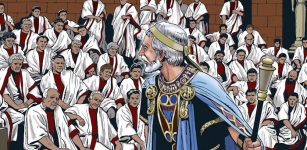 Roman Consuls Seized Power Through Intimidation, Bribery And Show Business
Ancient History Facts | Feb 24, 2021
Roman Consuls Seized Power Through Intimidation, Bribery And Show Business
Ancient History Facts | Feb 24, 2021 -
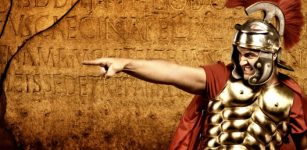 Meaning Of Ancient Hand Signs We Still Use Today
Ancient History Facts | Apr 22, 2021
Meaning Of Ancient Hand Signs We Still Use Today
Ancient History Facts | Apr 22, 2021 -
 Daedalus And Icarus Who Forever Remained An Example For Many Dreamers
Featured Stories | Sep 11, 2023
Daedalus And Icarus Who Forever Remained An Example For Many Dreamers
Featured Stories | Sep 11, 2023 -
 Dragon’s Head – One Of The Most Famous Viking Symbols Discovered At Birka Ancient Excavation Site
Ancient Symbols | May 19, 2015
Dragon’s Head – One Of The Most Famous Viking Symbols Discovered At Birka Ancient Excavation Site
Ancient Symbols | May 19, 2015 -
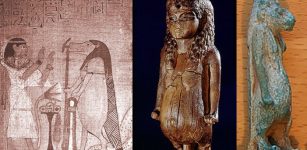 Taweret – Powerful Egyptian Hippopotamus ‘Household Goddess’ Guarded Childbirth, House, Sleep And Dispelled Evil Forces
Egyptian Mythology | Jul 16, 2018
Taweret – Powerful Egyptian Hippopotamus ‘Household Goddess’ Guarded Childbirth, House, Sleep And Dispelled Evil Forces
Egyptian Mythology | Jul 16, 2018 -
 Perplexing Accounts Of Ancient People Who Demonstrated Incredible Powers Of The Human Mind
Featured Stories | Feb 1, 2019
Perplexing Accounts Of Ancient People Who Demonstrated Incredible Powers Of The Human Mind
Featured Stories | Feb 1, 2019 -
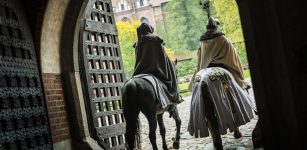 Teutonic Knights – Facts And History About The Christian Military Order
Featured Stories | Feb 21, 2019
Teutonic Knights – Facts And History About The Christian Military Order
Featured Stories | Feb 21, 2019 -
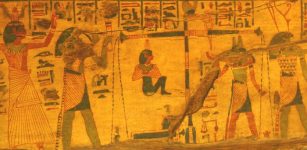 Meskhenet: Egyptian Goddess Of Household And Childbirth Who Governed Over Fate And Destiny
Egyptian Mythology | Mar 14, 2019
Meskhenet: Egyptian Goddess Of Household And Childbirth Who Governed Over Fate And Destiny
Egyptian Mythology | Mar 14, 2019 -
 Amazing Margate Shell Grotto – Kent’s Greatest Mystery
Featured Stories | Jun 10, 2014
Amazing Margate Shell Grotto – Kent’s Greatest Mystery
Featured Stories | Jun 10, 2014 -
 Legendary Minamoto No Tametomo – First Samurai To Commit Seppuku
Ancient History Facts | Aug 7, 2023
Legendary Minamoto No Tametomo – First Samurai To Commit Seppuku
Ancient History Facts | Aug 7, 2023 -
 What Was The Extreme Ritual Of Sokushinbutsu?
Ancient Traditions And Customs | Jun 20, 2018
What Was The Extreme Ritual Of Sokushinbutsu?
Ancient Traditions And Customs | Jun 20, 2018 -
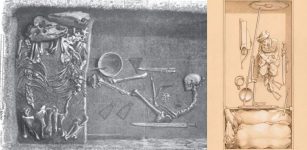 Birka Warrior Was A Woman – DNA Reveals
Archaeology | Feb 15, 2018
Birka Warrior Was A Woman – DNA Reveals
Archaeology | Feb 15, 2018 -
 Traces Of An Unknown Ancient Race Of Winged Beings And Other Mysterious Creatures Discovered In Japan
Civilizations | Nov 30, 2018
Traces Of An Unknown Ancient Race Of Winged Beings And Other Mysterious Creatures Discovered In Japan
Civilizations | Nov 30, 2018 -
 Cursed Dwarf Fafnir Turned Into A Fearsome Norse Dragon And Guarded The Stolen Magical Ring Andvaranaut
Featured Stories | Aug 16, 2017
Cursed Dwarf Fafnir Turned Into A Fearsome Norse Dragon And Guarded The Stolen Magical Ring Andvaranaut
Featured Stories | Aug 16, 2017 -
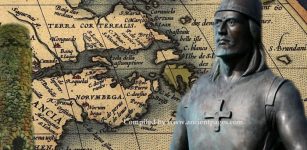 Is Legendary Norumbega In North America A Lost Viking Settlement?
Featured Stories | Jan 8, 2021
Is Legendary Norumbega In North America A Lost Viking Settlement?
Featured Stories | Jan 8, 2021 -
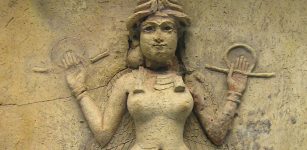 In Ancient Mesopotamia, Sex Among The Gods Shook Heaven And Earth
Featured Stories | Oct 8, 2022
In Ancient Mesopotamia, Sex Among The Gods Shook Heaven And Earth
Featured Stories | Oct 8, 2022 -
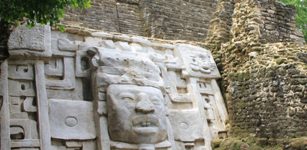 Lamanai, Belize: One Of The Largest And Oldest Maya Cities Dated To 1500 BC
Civilizations | Nov 2, 2018
Lamanai, Belize: One Of The Largest And Oldest Maya Cities Dated To 1500 BC
Civilizations | Nov 2, 2018 -
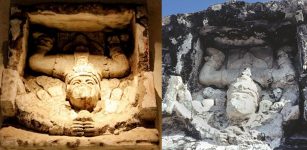 Ancient Maya Ruins Of Tulum: Sea Port And Sacred Site For Worshiping Of Descending God
Featured Stories | Aug 10, 2016
Ancient Maya Ruins Of Tulum: Sea Port And Sacred Site For Worshiping Of Descending God
Featured Stories | Aug 10, 2016 -
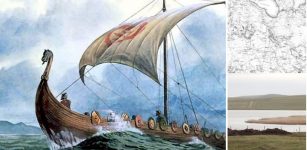 Long-Lost Viking Waterway Leading To Orkney, The Great Norse Empire – Discovered
Archaeology | Aug 5, 2020
Long-Lost Viking Waterway Leading To Orkney, The Great Norse Empire – Discovered
Archaeology | Aug 5, 2020 -
 Peculiar Accounts Of Ancient Flying Metallic Dragons And Bells In China And Japan
Chinese Mythology | Dec 27, 2018
Peculiar Accounts Of Ancient Flying Metallic Dragons And Bells In China And Japan
Chinese Mythology | Dec 27, 2018



